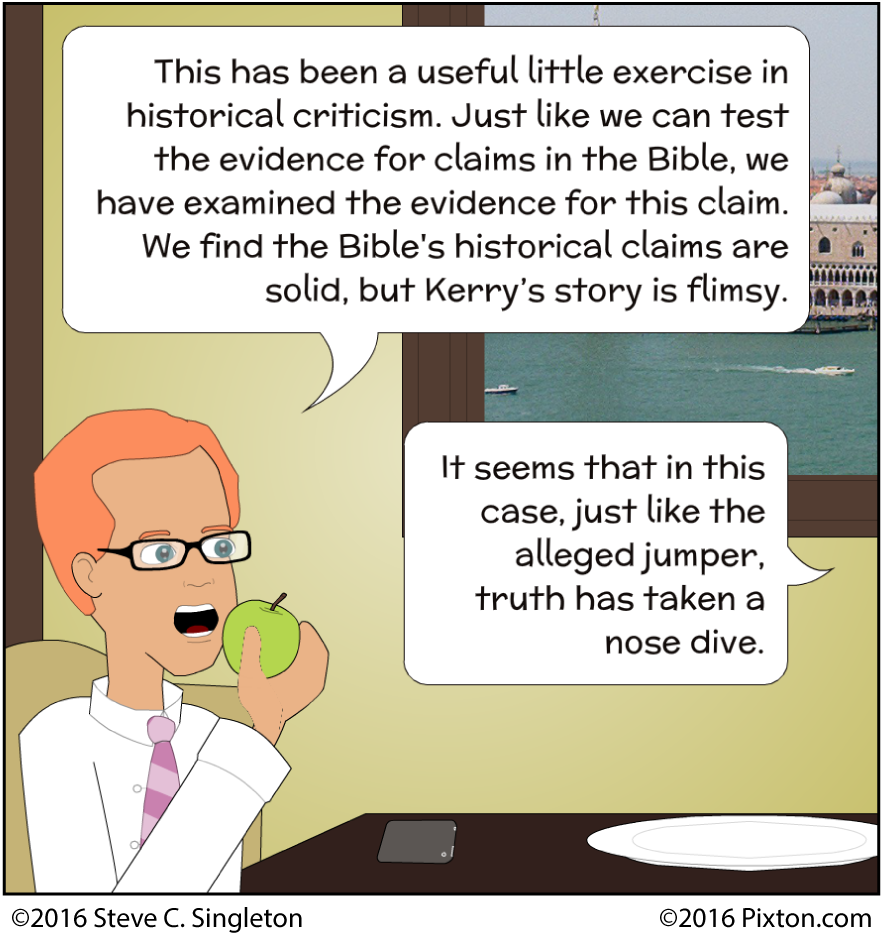Are the biblical narratives credible as history?


 The problem: Are the biblical documents historically reliable?
The problem: Are the biblical documents historically reliable?
Up until the so-called Enlightenment (about 1750), Bible believers held firmly to the historicity of both the Old Testament and New Testament narratives, and few others raised any questions. Historians attempted to conform external historical accounts to the biblical text with very few doubts as to the Bible’s veracity.
The rise of humanism, with its emphasis on the scientific method and its rejection of any supernatural explanation, together with a legitimate desire for objectivity, introduced a scholarship no longer unquestioningly tied to Scripture. Historians no longer accepted biblical narratives at face value. Even in cases where there was no conflict with external sources, historians doubted the factuality of the biblical account, especially when anything supernatural is reported.
In the past 50 years, however, some scholars have begun to reaffirm the historical reliability of the biblical text. This despite others who reject it out of hand as a foregone conclusion, without even considering the evidence. While acknowledging that the literary purpose the biblical authors had in mind was necessarily theological, these scholars have found reasons to trust the Bible’s historicity. We will pose four questions regarding historicity and then consider the Bible’s most significant case: the resurrection of Jesus.
Are the witnesses trustworthy?
As an example, take Luke, the human author of the Third Gospel and Acts of the Apostles, which together comprise more than a quarter of the New Testament. The two places in the Book of Acts in which the author changes his narrative from third person to first person (“they” to “we” – Acts 16:10 and Acts 20:5) indicate that he was an eyewitness or at least those portions of the events recorded in Acts.
According to Colossians 4:14 and 2 Timothy 4:11, Luke was one of the companions of the Apostle Paul toward the end of his career. Accompanying Paul on his trip to Jerusalem, Luke would have met many of the early disciples of Jesus, including James the half-brother of Jesus, and perhaps even Mary the mother of Jesus. During the time that Paul was under house arrest in Caesarea, Luke probably would have been free to conduct his research into the events the life of Jesus and of the primitive church.
All of this fits what Luke himself claims in Luke 1:3-4: “since I myself have carefully investigated everything from the beginning, I too decided to write an orderly account for you, most excellent Theophilus, so that you may know the certainty of the things you have been taught.”
Other biblical writers make similar claims. The Apostle Peter, for instance, says: “For we did not follow cleverly devised stories when we told you about the coming of our Lord Jesus Christ in power, but we were eyewitnesses of his majesty” (2 Peter 1:16). The Apostle John says, “That which was from the beginning, which we have heard, which we have seen with our eyes, which we have looked at and our hands have touched—this we proclaim concerning the Word of life” (1 John 1:1). In his account of the death of Jesus, John delivers this solemn testimony: “One of the soldiers pierced Jesus’ side with a spear, bringing a sudden flow of blood and water. The man who saw it has given testimony, and his testimony is true. He knows that he tells the truth, and he testifies so that you also may believe” (John 19:34-35).
The writers of the Old Testament are equally trustworthy, since most of them were prophets and wrote about mostly contemporaneous events. Those who wrote about previous generations often had access to court records (see 1 Kings 11:41; 14:19, 29; etc.).
Of course, believers also hold to a divine Source for historical information. “All Scripture is God-breathed,” Paul reminds us (2 Tim. 3:16). Jesus promised His apostles that the Holy Spirit would guide them into all truth, bringing to their consciousness what they themselves had heard of Jesus’ teachings (John 14:25-26 and John 16:13-14).
Do we have historical details?
Occasionally the biblical writers will provide more detail than is necessary to tell their story. For example, when Jesus fed the 5000, Mark tells us that there was plenty of green grass in that place (Mark 6:39). John reports that when the disciples experienced a miraculous catch after Jesus’ resurrection, they counted up 153 large fish (John 21:11). On the day Benaiah killed a lion in a pit, it had snowed (2 Sam. 23:20; 1 Chron. 11:22). These historical details serve to confirm the eye-witness nature of the accounts.
Does the account seem to whitewash what happened?
It is well known that when an author wants to write fictitious stories about some hero, he or she tends to leave out anything negative. This however does not seem to be true about the biblical narratives. When we read about such biblical heroes as Abraham, Isaac, Jacob, Judah, Moses, David, Hezekiah, Peter, and John, we encounter them warts and all (see Gen. 12:13; Gen. 20:2; Gen. 26:7; Gen. 25:31; Gen. 27:1-30; Gen. 38:1-26; Num. 20:10-13; 2 Sam. 11:2-27; 2 Kings 20:12-19; Gal. 2:11-14; Luke 9:52-56).
Even in the case of Jesus, the narrators include stories that require some explaining, e.g., the cleansings of the temple at the beginning and end of his public ministry (John 2:13-17; Mark 11:15-17) and the cursing of the fruitless fig tree (Mark 11:12-14, 20-25). Likewise some of his sayings are difficult to understand and to explain (e.g., Matt. 10:34; Luke 14:26; Mark 13:32; Luke 22:36). Rather than sanitizing the record, the authors recorded what Jesus did and said.
Do we have any external corroboration?
According to Walter S. Kaiser, the Old Testament has received numerous confirmations, especially with regard to persons, places, and events. The same is true in the New Testament, where, for instance, we can confirm King Herod, Archelaus, Quirinius, Herod Antipas (called Herod the tetrarch), Pontius Pilate, Sergius Paulus, Gallio, Felix, Festus, King Agrippa, Berenice, and many others who appear in the text of the gospels or Acts. Other ancient historians, inscriptions, and coins bear witness to the veracity of the biblical text.
The most significant case: the resurrection of Jesus
The most crucial case of historicity in the Bible concerns the resurrection of Jesus. The four gospel accounts, the first chapter of Acts, and 1 Corinthians 15:5-8 give us an extensive list of the eyewitnesses to this world-changing event. Those eyewitnesses began to testify publicly in Jerusalem (Acts 2), the very place where it would have been easiest to expose them as liars. They maintained their testimony despite threats, persecutions, and eventual martyrdoms. No counter explanation is credible.
If Jesus arose from the dead, then He is who He says He is. His apostle have the power to write the New Testament, just as He promised, and we all have a decision to make. Will we submit to Him as Lord of all creation and more specifically Lord of our lives and our destiny?
Want to go deeper?
Walter S. Kaiser, The Old Testament Documents: Are They Reliable and Relevant? Downers Grove, Ill.: InterVarsity, 2001.
Kaiser strongly affirms the historical reliability of the Old Testament narratives in the face of nearly 200 years of negative criticism from liberal scholars and skeptics, arguing mostly from silence. Kaiser rightfully maintains that the biblical text is innocent until proven guilty.
F. F. Bruce, The New Testament Documents: Are They Reliable? Grand Rapids, Mich.: Eerdmans, 1960. And many reprints since.
The historicity of the New Testament narratives has found confirmation from the results of archaeology and a growing awareness of the Greco-Roman world. Like Kaiser, Bruce cites numerous cases in which New Testament passages once derided have gained validation.
Steve C. Singleton. “Resurrection Flowchart.” DeeperStudy, 2004.
I will send you this resource for free if you request it.


